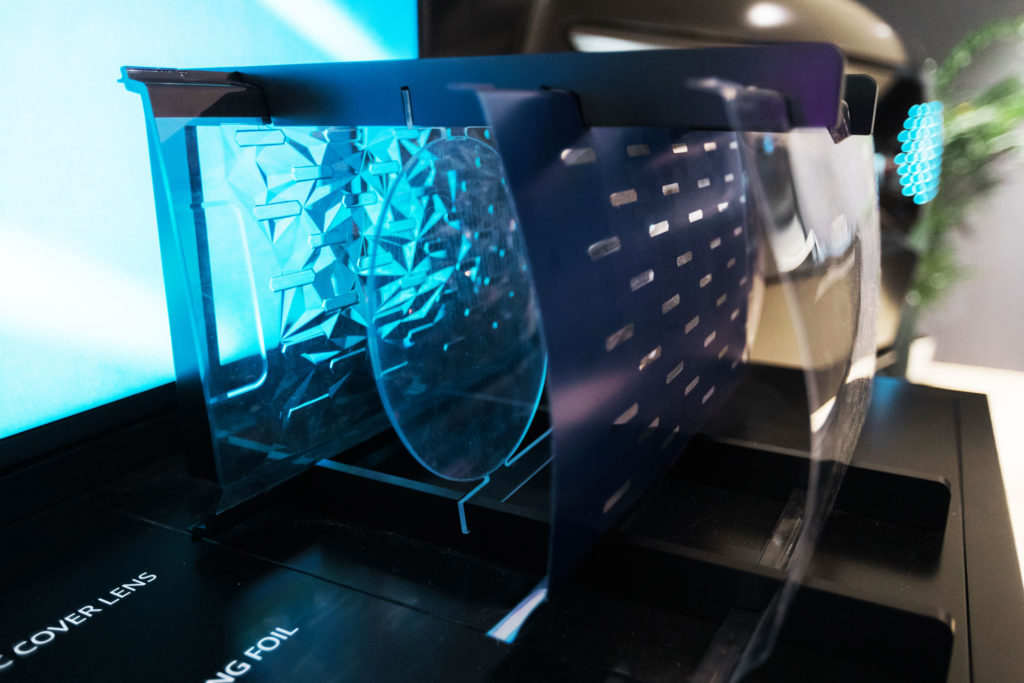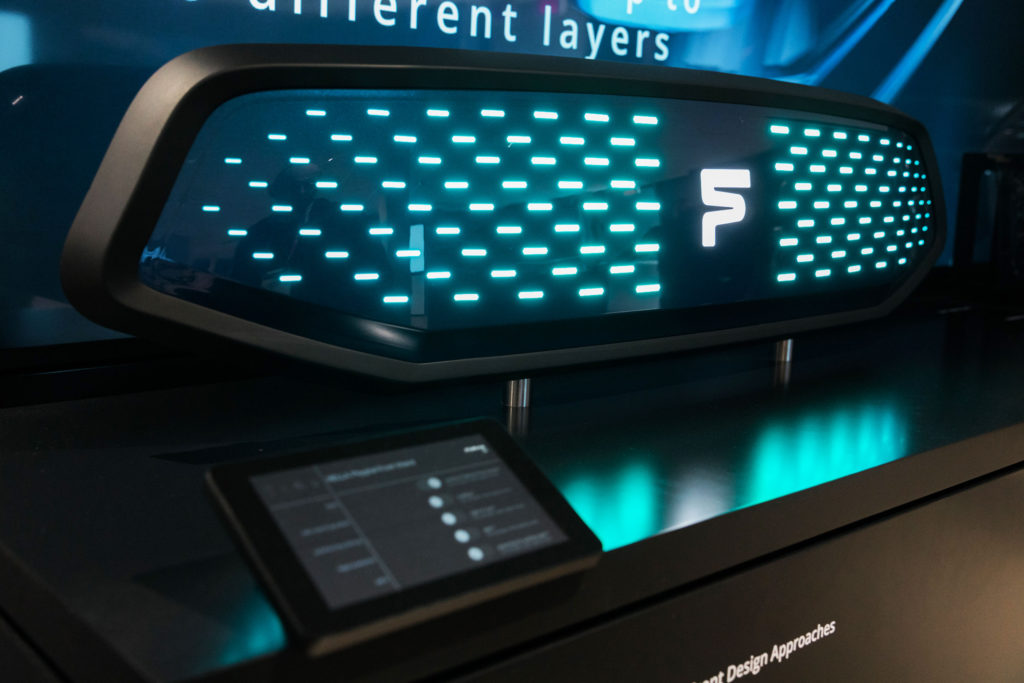Electric vehicles have dramatically different cooling requirements than internal combustion-powered cars and trucks. Since they’re not hauled down the road by thousands of tiny explosions, EVs don’t need huge radiators and gaping grilles to dissipate heat. This gives designers the opportunity to reshape how cars and trucks look while also adding new functionality.
“So, now there’s this open real estate on vehicles and what do you do with it?” asked Ben Cohen, head of sales excellence and marketing at Hella while giving EV Pulse a tour of parent company Forvia’s post-CES technology showcase. In the near future, automakers will turn to the new Front Phygital Shield, a technology that made its world debut last month at that massive trade show in Las Vegas.
SEE ALSO: Ford’s high-performance Lightning concept spied in Dearborn
Like a screen, the Front Phygital Shield allows a vehicle to share important information with its owner, pedestrians or other motorists. This could include the battery state of charge or directional indication, but much more is also possible. “So, for instance, if [an autonomous] car just drives up and there’s no one sitting in it, how do you alert people that the car is now waiting for you?” said Cohen. This technology can clearly communicate that information to passersby, so your vehicle doesn’t get ticketed or towed.

Depending on how many pixels automaker decide to go with in a particular application, the Front Phygital Shield can also show messages, write out simple words or even include unique branding. This technology, however, is not a traditional display screen, because practically speaking, there’s no real need for that on the outside of a vehicle. “No one’s going to really be sitting in the front of their car watching movies,” said Cohen. “Even though people keep talking about things like that … yes, you can do it, but what is the purpose?” With the Front Phygital Shield, improving safety and clearly communicating are the goals, not adding yet another screen to a vehicle in some misguided attempt to be trendy.
This exterior vehicle communications technology can include a single, standalone display panel, but the Front Phygital Shield can also integrate other vehicle components. Cohen showed a configuration where the grille as well as the high- and low-beam headlamps were all contained underneath a single panel spanning the width of a car’s front end. Aside from integrating many components into one assembly, this also provides a super-clean look.

Looking inside, Hella’s new display technology is comprised of several foil and plastic layers. This includes lighting elements, a cover to direct light as desired, a heating foil to keep any integrated radar sensors free of snow and ice and then a decorative layer, among others. Helping things look good for years to come, Cohen said the outermost section can actually heal itself over time. “So, it’s a polyurethane layer that goes across, and then when nicks or scratches are exposed to UV light, they kind of then can self-heal.”
CHECK THIS OUT: 2023 GMC Hummer EV pickup review: Breaking all the rules
The Front Phygital Shield is not currently in production, but interest from automakers is strong. In fact, Hella is working on some eight different electric vehicle projects that will utilize this technology, business that, in total, is worth more than $1 billion. Production of this system is expected to begin by the middle of 2025, so not too far into the future.

